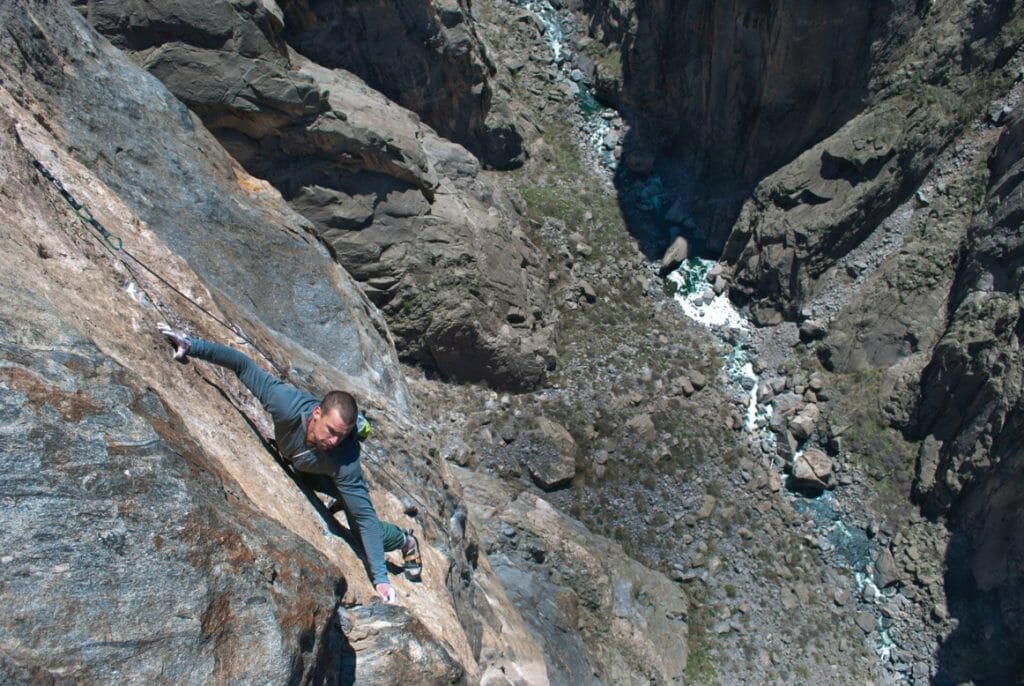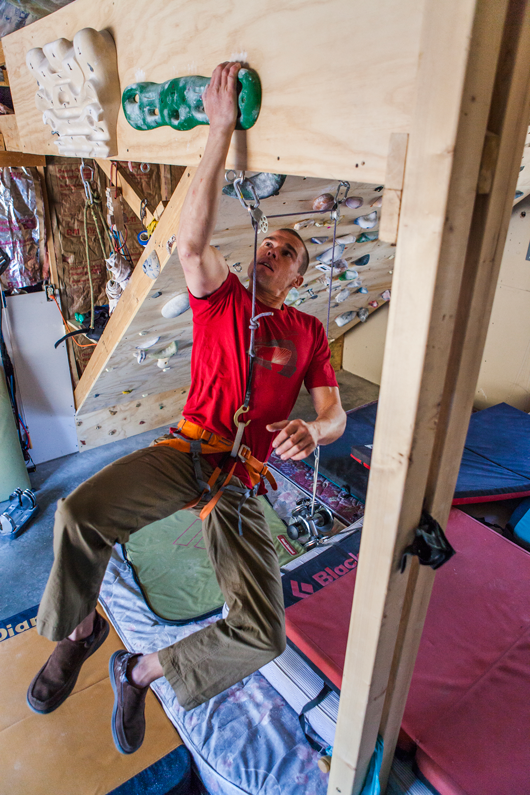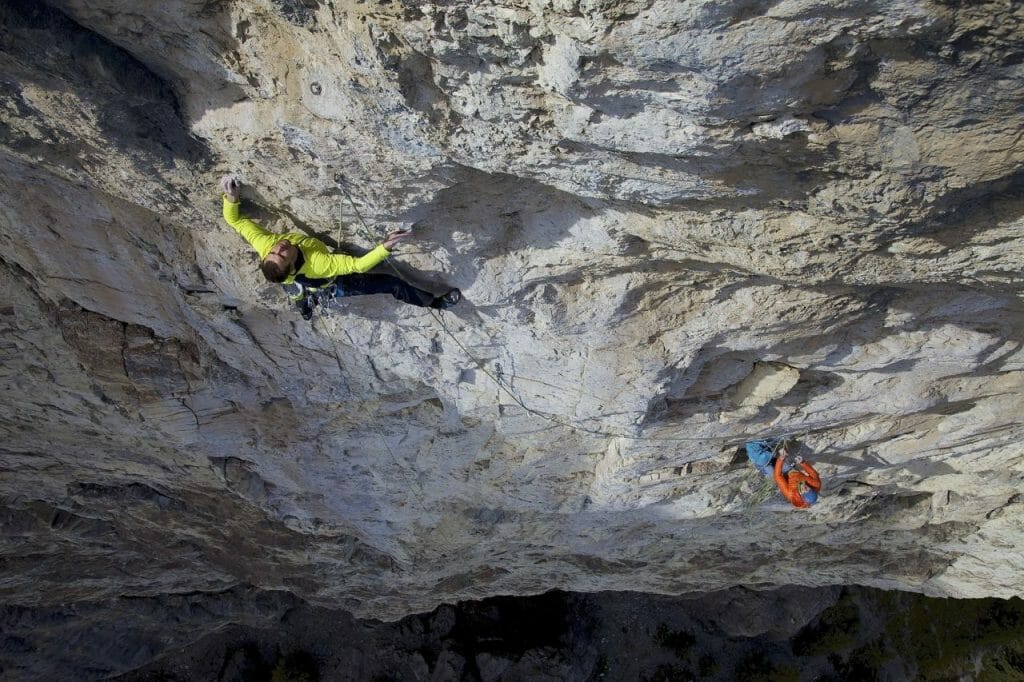Add this simple and effective recruitment fingerboarding workout to your training to track and improve finger strength over time.
Josh Wharton
- Here is our Recruitment Fingerboarding Log as a PDF, if you’re looking for that.
- Here is Josh’s Recruitment Hangboard Training Workout as a PDF for you to print and take to the gym.
When I began climbing in the ’90s, training was the antithesis of hip. A wave of gym-bred youngsters with natural talent outperformed the overtrained and underfed sport climbers who had dominated the scene in the ’80s. Training suddenly seemed silly, and the neon tights especially embarrassing. Most people decided that if you wanted to get better at climbing, it was best simply to climb. Preferably as much as possible.
This approach provided an uncertain path to improvement, and many climbers (myself included) plateaued. Sometimes I climbed a route that I considered hard, but it wasn’t always clear if I was stronger, had improved skills, or had just gotten more efficient at that particular route. Other than a grade, and a feeling, I didn’t have a way to quantify my climbing-specific strengths and weaknesses. My personal take on my climbing ability was erratic, highly subjective, and fluctuated day to day, if not pitch to pitch.
Sound familiar?
Twenty years later, training has become hip again. And whether it’s because climbers have gotten a bit wiser, or because of the gym explosion and the changing psyche of your average climber, what’s finally clear is that a random approach to climbing generally leads to a plateau, and to truly improve, you will eventually need to incorporate some climbing-specific training.

That said, climbing training is as varied as climbing styles. It’s common to feel overwhelmed by the latest and greatest training programs while losing sight of the simplest training principle: quantifiable progression.
That’s why I think it’s critically important that climbers add at least one very quantifiable form of training to their yearly training programs.
This should be something that’s simple, that you’re likely to do on a relatively consistent basis, and that you can track and return to often.
Since finger strength is generally considered the single biggest physical factor in rock climbing performance, I think the fingerboard is the best tool for beginner and intermediate climbers to quantify and improve their finger strength over time.
Below is a simple and effective Recruitment Fingerboarding routine. The goal is to quantify and track your ability to hang on to a particular hold for 10 seconds. Over time you can return to this workout and attempt to beat your personal record, ultimately creating a clear path toward improved finger strength, and certainty that your fingers have indeed gotten stronger!
Note on Midseason Application
Weekend climbers can benefit from this workout by doing it 1–2 times per week, midweek. Typically one day per week is enough assuming that you’re doing one submaximal effort workout by way of climbing or bouldering at your gym one other night per week. I recommend doing this on a Tuesday evening and gym climbing—don’t try to set records during midseason gym sessions; rather, focus on technique, breathing, reading routes, and other relevant skills—on Wednesday. I would rest Thursday and Friday so you’re fully recovered and can try hard on Saturday and Sunday.

Recruitment Fingerboarding Workout
- Create a small workout logbook. In this book you will keep track of the date, your weight, room temperature, amount of weight you add or subtract from your body weight, and the length of each hang. You may also want to download ours: Recruitment Fingerboarding Log.
- Warm up. You should be sure to do the workout while fresh, not only to avoid injury but also to make sure that you are seeing consistent improvement and producing reliable data. That said, you still need to warm up. Get in a brief 10 to 15 minutes of hangs or light (V0–V2) bouldering before you begin.
- Perform the following exercises. The weights I give below are merely suggestions, and it will likely take several workouts for you to find the right weight for you. The first hang should feel easy, and you should barely complete, or fail, on the final hang. Beginner climbers will likely need to subtract weight by wearing a harness and using a pulley system for certain holds.
2-Arm Hang, Big Pinch
I like the one on the Rock Prodigy board.
- Hang 10” +0lbs, rest 3’
- Hang 10” +10lbs rest 3’
- Hang 10” +20lbs rest 3’
2-Arm Hang, 1-Pad Edge
I like the lowest outside hold on a Beastmaker 2000.
- Hang 10” +0lbs, rest 3’
- Hang 10” +10lbs rest 3’
- Hang 10” +20lbs rest 3’
2-Arm Hang, Deep 2-Finger Pocket
Proceed carefully on these. Pockets can be injurious.
- Hang 10” +0lbs, rest 3’
- Hang 10” +10lbs rest 3’
- Hang 10” +20lbs rest 3’
2-Arm Hang, Sloper
I like the Rock Prodigy sloper.
- Hang 10” +0lbs, rest 3’
- Hang 10” +10lbs, rest 3’
- Hang 10” +20lbs, rest 3’
- Repeat with more weight. In the next workout, add 5 pounds to each hang. So, given the workout described above, the progression for each grip would be +5lbs, +15lbs, +25lbs. Continue this progression throughout the workout cycle. For example, if you do a four workout cycle, starting with the above weights, by the final workout the weights would be +20lbs, +30lbs, +40lbs for each grip.
The Cycle
- Do 4–6 workouts, over 2–3 weeks, with no more than 2 workouts per week. Aim for at least two of the above cycles to really see improvement, and up to six throughout the year for best results. Return to this workout every year.
- Measure your improvement. When you return to this workout throughout the year, start in a place that will lead to besting the previous cycle’s PR on each hold during the final workout.
- Apply that strength to climbing! Simply put, stronger fingers make holds feel bigger. You’ll notice the usefulness of this workout cycle almost immediately. Small crimps will feel a bit bigger, making that “impossible move” seem a bit more possible.
While fingerboard training alone won’t guarantee a quantum leap in your climbing ability, it is an important tool. It’s simple, quick, and effective, and before long you’ll know whether you just feel stronger, or are actually stronger. I think you’ll be surprised by how empowering that knowledge can be for improving your climbing.
About Josh Wharton
Josh Wharton is North America’s preeminent all-around climber. From V11 boulders and 5.14 redpoints to first ascents and new routes in the Himalaya, Josh has done it all. Josh’s nickname among his climbing partners is “coach” because of his impressive knowledge of training theory and practice. Uphill Athlete is proud to have Josh on our team.

